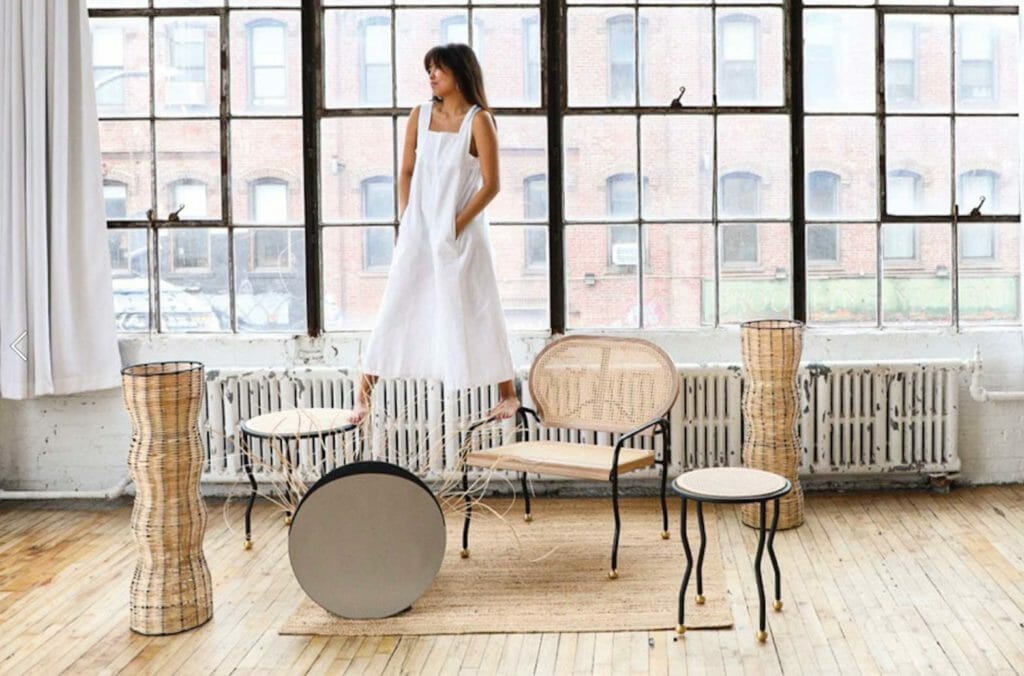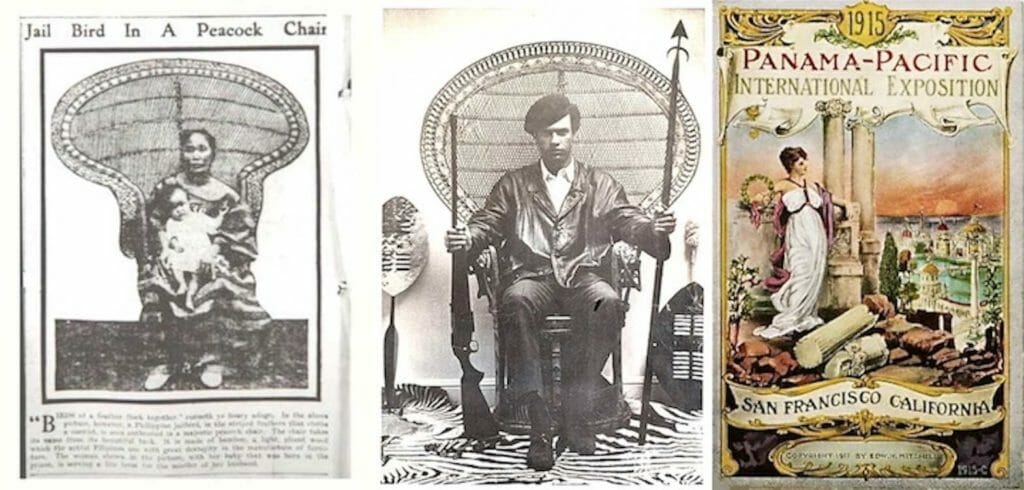Fil-Am artist-designer reclaims PH origin of Peacock chair

Cheyenne Concepcion and her Peacock chair-inspired Doña Lounge Chair. WEBSITE
Over the years, the Philippine origin of the Peacock chair has faded into obscurity. Made of woven-rattan with a high rounded back, it has been seen around the world in design and interior décor magazines, and most famously in the picture of a seated Black Panther Party co-founder Huey Newton.
Filipino American artist-designer Cheyenne Concepcion accidentally learned of its Philippine beginnings while doing research on the architecture of the 1915 Panama Pacific International exposition in San Francisco.
A graduate student of landscape-architecture, Concepcion was looking for historical references for personal inspiration when she serendipitously came across the Peacock chair.
“This is one of the most famous chairs in the world, and it’s so disconnected from its original heritage,” Concepcion told New York Magazine’s Curbed.com.

The original Peacock chair in Bilibid Prison; the late Black Panther leader Huey Newton; poster for the Panama-Pacific International Exposition.
The chair was originally made by prisoners at the Bilibid Prison in Manila in the early 1900s, when the American colonial government put inmates to work in “rehabilitation” programs, including making rattan tables, chairs, lamps and shelves that the prison management sold.
A photo in El Paso’s Herald in 1914 titled “A Jail Bird In A Peacock Chair,” shows a woman in a striped dress “enthroned in a majestic peacock chair” with a baby.
At the 1915 exposition, the Peacock chair sparked public interest. To American furniture buyers it became a symbol of imagined royalty.
“Like a throne chair, one imagines a chieftain sitting here in all his regal splendor of painted skin and beads under palm trees,” read a 1914 American Homes and Gardens article.
Concepcion’s new furniture collection, Reclaim, which she launched at WantedDesign in Brooklyn, New York shows the Peacock chair’s influence on her design.
“Because of colonization and assimilation, there has been a loss of a direct connection between our Indigenous past and where we are today. My dream is to bring visibility to our story,” she told Curbed.com.

